
Most people would never think of omitting butter in a cookie recipe, but butter isn't a must-have ingredient. Although the structure and fat in butter gives traditional cookies their flavor and texture, you have other options. When you want to offer healthier alternatives for your kids or simply don't have butter on hand, find a replacement in your pantry or refrigerator. As long as cookie eaters don't mind a slightly different texture and taste, you have several options.
Oils
Canola oil is an excellent alternative to butter in most cookie recipes. It is lower in cholesterol, sodium and saturated fat, and creates a slightly softer, moister cookie. Use about 3/4 cup of canola oil for every 1 cup of butter that your recipe calls for. Or use coconut oil to add a faint coconut fragrance to baked goods. It is higher in saturated fat than butter, but the main saturated fat is lauric acid, which is believed to be less harmful to the heart than other saturated fatty acids, according to the American Dietetic Association. Because it becomes solid at temperatures below 76 degrees Fahrenheit, use it like solid butter for cookie recipes that call for creaming butter with sugar. Use the same amount of coconut oil as butter in whatever form -- solid or liquid -- that your cookie recipe calls for.
Dairy Alternative
Substitute Greek yogurt for butter in cookie recipes to reduce calories and saturated fat, and add a good dose of protein. Yogurt creates cookies that have a slightly smoother and chewier texture than traditional cookies. Many Greek yogurt cookie recipes recommend replacing only half the butter, about 1/4 cup of yogurt and a 1/2 cup butter for every 1 cup of butter in a recipe. You may eliminate the butter altogether, but your cookie will be very soft and have a more cake-like texture. You can also replace butter with cream cheese. It has less fat than butter, but is still a solid fat that imitates the butter texture in cookie recipes. Use cream cheese in the same amount as the butter called for in your recipe. `
Pureed Fruit and Vegetables
Vegan recipes may feature applesauce and other fruit or vegetable purees in place of butter. Substitute applesauce for oil or melted butter to add moisture and fiber and reduce the fat. Replace up to half of the melted butter in a recipe with applesauce, which will allow the cookie to maintain some cookie crunch and shape. Replacing all of the butter is an option, although it will result in a much softer, cake-like cookie. Another butter-replacement option is pumpkin or sweet potato puree. Like applesauce, it will change the texture of the cookies, making them softer and fluffier than traditional cookies. Replace all or half of the melted butter with it.
Margarine and Shortening
Serious bakers may frown upon margarine, but it's an option if you're simply looking for a cookie with the texture of traditional cookie, with less saturated fat and no cholesterol. Cookies will typically come out slightly chewier than cookies made with butter, however. Use equal amounts of margarine to butter in cookie recipes. Choose margarine that is at least 80 percent vegetable oil to get as close to the traditional cookie texture as possible. You can also substitute shortening for butter in equal amounts. Shortening, which is also made from vegetable oil, is another cholesterol-free option. Cookies made with margarine and shortening tend to spread more than cookies made with butter. Chilling the dough in the refrigerator before baking can help.
Related Articles
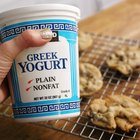
How to Replace Butter With Greek Yogurt ...

Healthy Butter Substitutes for Brownies
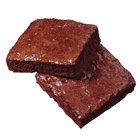
How to Replace Yogurt for Butter in ...
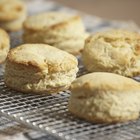
Butter Substitute for Baking Scones

Substitutes for Shortening in Frosting
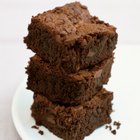
Substitution for Oil in Baking Brownies

A Butter Substitute for Baking Muffins

Can You Substitute Vegetable Shortening ...
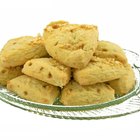
What Is the Difference Between Scones & ...

A Heavy Cream Substitute for Creme ...

Vegan Alternatives to Lanolin in ...

What Can I Substitute for Butter When ...

Butter Substitute for Baking Scones

How to Make Your Own Hand Lotion With ...

What Can I Substitute for Butter When ...

Greek Yogurt as a Replacement for Sour ...

Greek Yogurt Instead of Butter in Baking

Is Cashew Butter Healthy?
How to Use Unsweetened Applesauce in ...

Can You Use Butter Instead of Cooking ...
References
- Culiary Institute of America Pro Chef: Baking With Canola Oil: Give Trans Fat the Boot
- The New York Times: Once A Villian, Coconut Oil Charms the Health Food World
- The Kitchn: How Do I use Coconut Oil When Baking?
- Our Best Bites: All About Greek Yogurt
- Prevention.com: What We Can Learn From Norway's Butter Shortage
- Spark People: Light Baking Done Right
- Betty Crocker: Baking With Butter
- Crisco: All About Cookies
Writer Bio
Based in Los Angeles, Zora Hughes has been writing travel, parenting, cooking and relationship articles since 2010. Her work includes writing city profiles for Groupon. She also writes screenplays and won the S. Randolph Playwriting Award in 2004. She holds a Bachelor of Arts in television writing/producing and a Master of Arts Management in entertainment media management, both from Columbia College.
Photo Credits
Ablestock.com/AbleStock.com/Getty Images